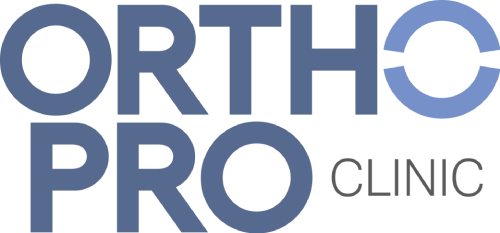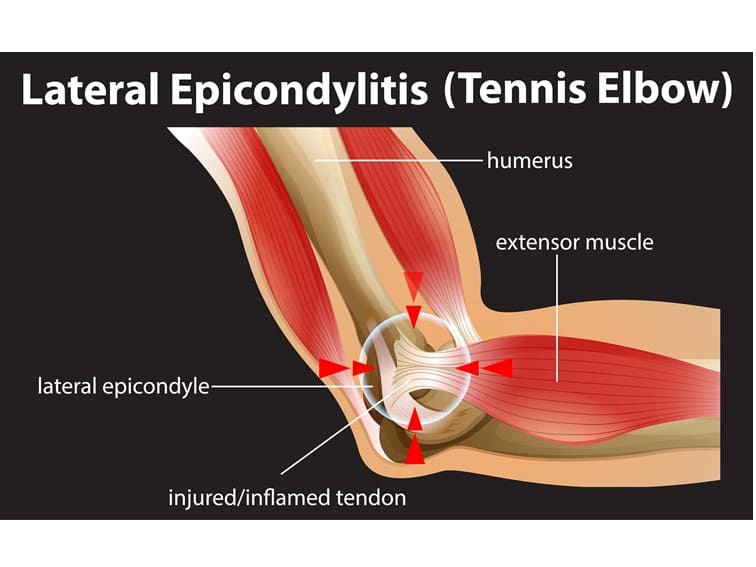Tennis elbow treatment in Hyderabad | Dr. Praharsha Mulpur
Lateral epicondylitis or tennis elbow is an inflammation or a painful condition of the elbow. Overuse and repeating the same motions, again and again, can damage the tendons and the forearm muscles over a period of time. The bony bump on the outside (lateral side) of the elbow is called the lateral epicondyle. The tendons that join forearm muscles microtear and get inflamed due to repeated motions of the hand. These tendons are called extensors or the extensor carpi radialis brevis (ECRB). The person who develops this condition feels pain and tenderness on the outside of the elbow. This condition is commonly seen in people who play tennis or racquet sports. Surprisingly, other activities and sports that involve repeated hand movements can also put a person at risk.
What is the prominent cause of tennis elbow?
Damage to a specific forearm muscle called ECRB causes tennis elbow. This mostly happens in tennis. Microscopic tears form due to overuse and weakness in the tendons where the muscle attaches to the lateral epicondyle. This leads to pain and inflammation. When the elbow moves repeatedly, the ERCB muscle undergoes wear and tear over time. Thus, it is prone to damage.
Who are at risk of developing tennis elbow?
People who are involved in vigorous and repetitive use of the forearm and extension of the hand and wrist may develop tennis elbow.
Many people think that this condition develops only in those who play tennis. On the contrary, people who involve in recreational activities or work also develop tennis elbow. Such activities require vigorous and repetitive use of forearm muscles. People who involve in the following works more often get tennis elbow: cooking, auto works, carpentry, plumbing, butchering, and painting work. These professions require lifting weights and repetitive work that lead to injury, inflammation, and pain.
In racquet sports like tennis, improper stroke technique and improper equipment may be risk factors.
Sometimes, tennis elbow can occur due to an unknown or idiopathic cause.
Age
It is not a major risk factor as anyone can get a tennis elbow irrespective of age. However, tennis elbow is more common between ages 30 and 50 years.
Lateral Epicondylitis (Tennis Elbow) Diagnosis
Your orthopedic doctor takes into account several factors including your profession and day-to-day activities. The doctor may ask you about your symptoms, occupational risks, and other recreational activities.
You should tell your doctor about any recent injury to your elbow or the activities that are causing the symptoms. If you have a nerve injury or rheumatoid arthritis, inform your doctor.
Tennis Elbow Test
During a physical examination, your doctor may ask you to straighten your wrist and fingers by fully straightening your arm to see whether this causes pain. If you feel pain, then this may indicate that your muscles have become weak.
Tennis Elbow X-ray & MRI: Your doctor may recommend determining the extent of damage in the tendon and muscle and ruling out other injuries. Electromyography (EMG) may be ordered to rule out nerve compression and nerve injuries.
Tennis Elbow Treatment in Hyderabad at Sunshine Hospitals
Tennis Elbow Physiotherapy
Your physiotherapist may suggest exercises to strengthen your forearm muscles. To improve muscle healing, the therapist may perform, ice massage and muscle-stimulating techniques.
Your orthopedic doctor may recommend special braces to cover the back of your forearm and give steroid injections to relieve pain and inflammation if it is severe.
Shock wave therapy
Extracorporeal shock wave therapy: A device sends sound waves to the affected elbow to create microtrauma. This is done to promote the body’s natural healing process. Some experts believe this therapy to be effective, but others consider it experimental.
Surgery for Lateral epicondylitis tennis elbow
There are many treatment options for tennis elbow. In most cases, treatment involves a team approach. A general physician, sports medicine expert, or a physical therapist may take care if you have mild symptoms. However, in some cases, an orthopedic surgeon operates to provide the most effective relief from symptoms.
If symptoms don’t respond to non-surgical treatments for up to a few months, your orthopedic doctor may recommend surgery. An orthopedic surgeon considers several factors – such as your overall health, personal needs, and the extent of injury, and then discusses the surgical options including arthroscopic surgery. If you have been suffering from nagging symptoms for a long, then meet Dr. Praharsha Mulpur for the best Tennis elbow treatment in Hyderabad.


